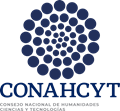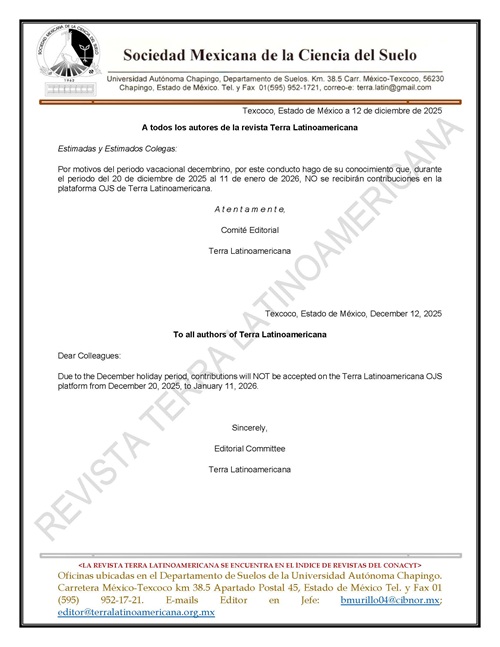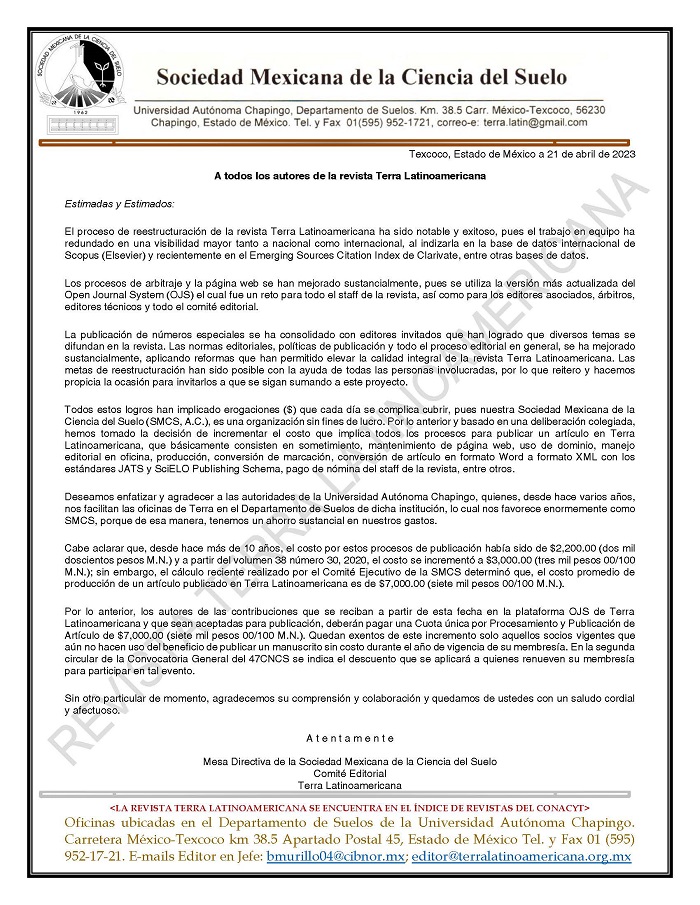The potential of Mimosa pigra to restore contaminated soil with anthracene and phenanthrene
DOI:
https://doi.org/10.28940/terra.v38i4.603Keywords:
bioaccumulation, bioremediation, hydrocarbon, phytoremediationAbstract
Hydrocarbon contamination cause serious environmental damage and human health problems, therefore, to resolve this problem has been proposed diversely remediation techniques friendly with the environment i.e. bioaugmentation, biostimulation, natural attenuation and phytoremediation. Among options, the phytoremediation causes minimum alterations to soil, low cost, it has proved good eff iciency and gained public acceptation. In the present study, the capacity of Mimosa pigra to restore a contaminated soil with both anthracene and phenanthrene was evaluated, along with the soil physicochemical changes due to both plant and contaminant presence in the soil. A silt-loam contaminated soil with 100 mg kg-1 (dry weight) anthracene and 200 mg kg-1 (dry weight) phenanthrene was used in all three treatments: Contaminated soil with M. pigra (C1), contaminated soil without M. pigra (C2), and not contaminated soil with M. pigra (C0) as control. After 70 days of experimentation both biomass and height of M. pigra was not affected due to soil contaminants. There was no difference among treatments for some physicochemical characteristics e.g. soil pH, electrolytic conductivity, soil-texture, and total nitrogen content throughout the experiment. M. pigra increased the soil water holding capacity after 50 and 70 days of the experiment, however, total organic carbon content was lower after 70 days compared to the control treatment. The higher contaminant removal rate was before 7 days of experimentation for all treatments. Anthracene and phenanthrene content were lower in treatments with the presence of M. pigra: 92% of phenanthrene and 80% of anthracene were removed in C1 while nearly 77% of phenanthrene and 60% of anthracene were removed in C2. This suggest a greater removal of contaminants using M. pigra. Total removal of contaminants was not achieved. However, M. pigra was able to accumulate both compounds, showing the M. pigra capability for bioremediation use in contaminated soils.
Downloads
Publication Facts
Reviewer profiles N/A
Author statements
- Academic society
- Terra Latinoamericana
- Publisher
- Mexican Society of Soil Science, C.A.

















